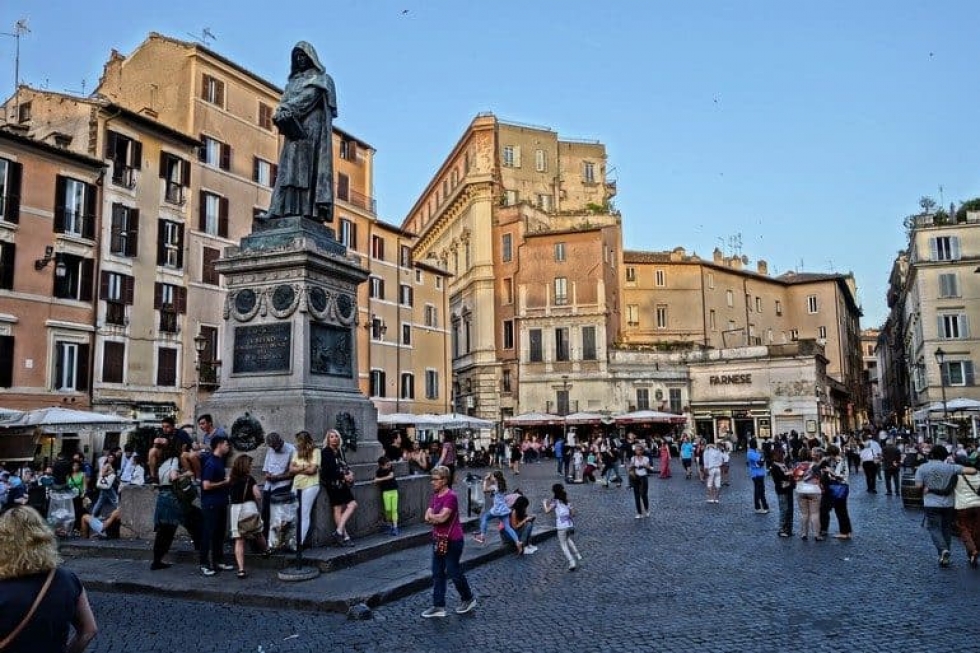Actually the square got its name in a very less romantic way: from the field of flowers that used to occupy it till the XV century.Then – during the second half of the XV century and until the end of the following one – the zone underwent a renewal work which brought at its paving and at the construction of various buildings.The work of renovation of the area was started by Pope Callixtus III in 1456 and went on with Pope Sixtus IV from 1483. In 1478 the market of Piazza del Campidoglio was moved to Piazza Navona, helping the growth of the entire neighborhood. Inns and boarding houses rose to host gentlemen of different provenance. Among the most famous inns is to remember the “Locanda della Vacca” located in the near ‘vicolo del Gallo’ and owned by Vannozza Cattanei – known for being the lover of Pope Borgia (Alexander VI) -. The noble-woman gave birth to the well-known children: Lucrezia, Cesare, Juan and Josè. The last three of them were born in this very tavern of which nowadays remains only the family’s coat.The area experienced another boost in 1869 when the market moved from Piazza Navona to Campo de’ Fiori. Since that year the square started to gain a commercial role which was preserved till today. However Campo de’ Fiori was also set of various capital executions especially for those people who went against the Inquisition. The victims were brought here from the dungeons of Castel Sant’Angelo and they were executed in the middle of the square in some very cruel ways.Among the most well-known victims we have to remember the Dominican friar Giordano Bruno who was burned at the stake the 17th February of 1600 for not giving up on his philosophical theories considered heretical by the Church. Although the clerical power of that time firmly opposed, to honour the memory of the martyr and to celebrate his ideas in 1889 a statue was built in the middle of Campo de’ Fiori - in the very place of the stake -. Where today stands this majestic statue there once was a big fountain: Fontana della Terrina (Tureen Fountain) so called because of his peculiar shape that resembles a soup tureen!After the construction of Giordano Bruno’s statue this fountain – built in 1590 – was moved at first in the municipal storehouse and then in 1924 located near the old square. In the same year a copy of the monument was made and placed in Campo de’ Fiori next to the philosopher statue. An interesting fact: Campo de’ Fiori is the only historical Roman square without a church that overlooks on it. A very unique characteristic considering that Rome is the city with more churches in the world (more than 900!).
Giuseppe Rosselli




